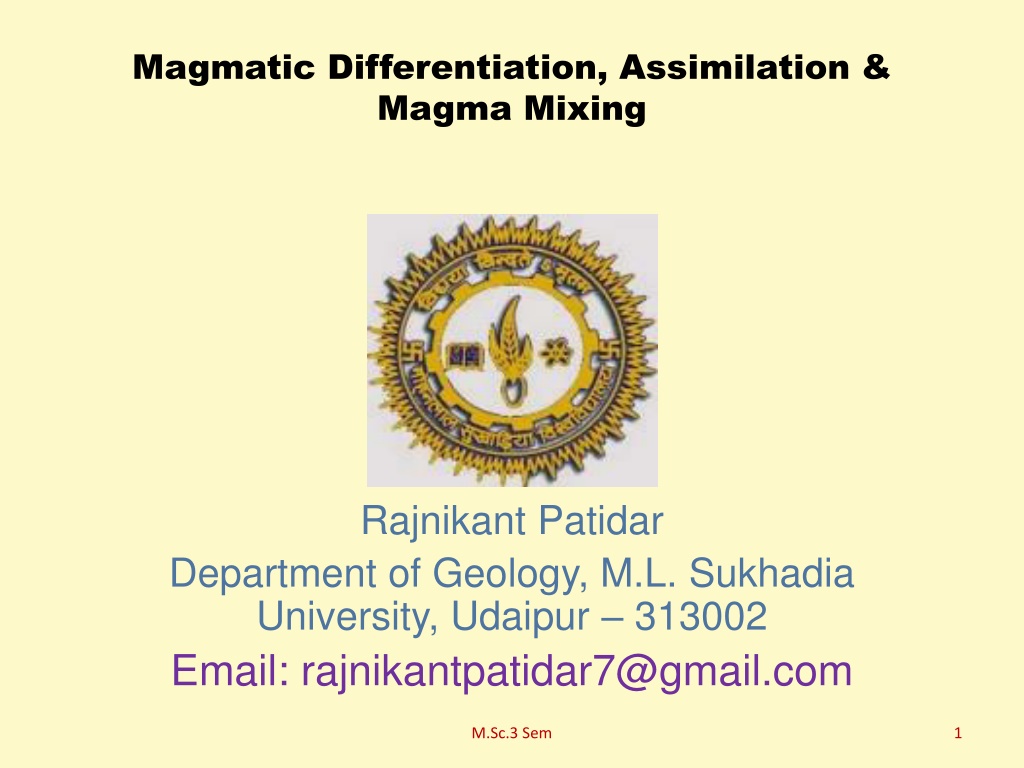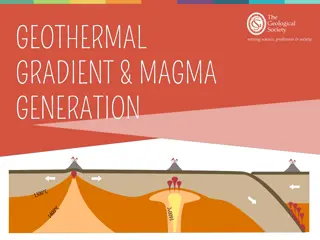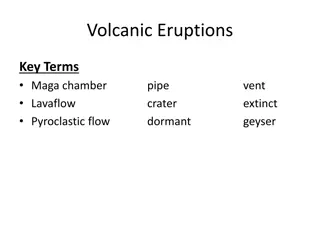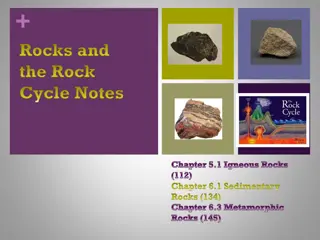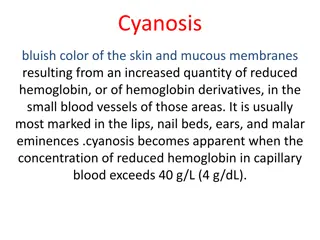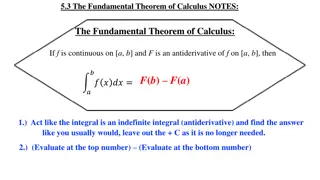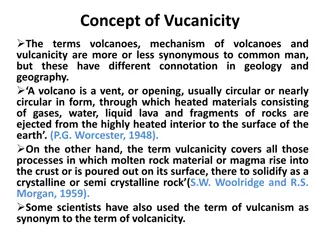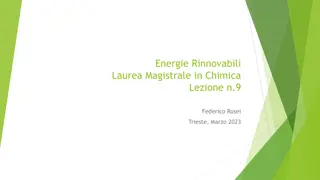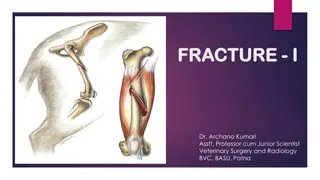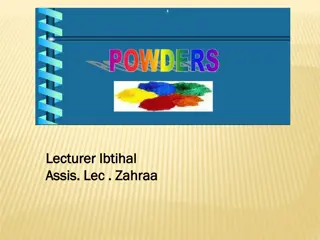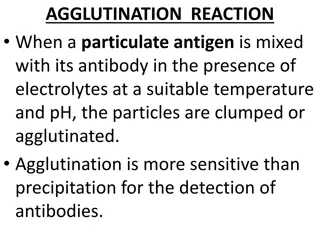Understanding Magmatic Differentiation and Magma Mixing
Magmatic differentiation is the process through which a single homogeneous magma can produce diverse rock types by generating fractions of different compositions. This variation in igneous rocks results from mechanisms like fractional crystallization, liquid immiscibility, vapor transport, and diffusion. Contamination differentiation, caused by assimilation of wall rocks or magma mixing, is another factor contributing to the diversity of igneous rocks. Fractional crystallization, a powerful mechanism, involves segregating and removing crystallized minerals from a melt, altering its composition.
- Magmatic Differentiation
- Igneous Rocks
- Fractional Crystallization
- Magma Mixing
- Contamination Differentiation
Download Presentation

Please find below an Image/Link to download the presentation.
The content on the website is provided AS IS for your information and personal use only. It may not be sold, licensed, or shared on other websites without obtaining consent from the author. Download presentation by click this link. If you encounter any issues during the download, it is possible that the publisher has removed the file from their server.
E N D
Presentation Transcript
Magmatic Differentiation, Assimilation & Magma Mixing Rajnikant Patidar Department of Geology, M.L. Sukhadia University, Udaipur 313002 Email: rajnikantpatidar7@gmail.com M.Sc.3 Sem 1
Why do we get so much variation in igneous rocks? There is only Two or Three Types of Primary Magmas and Igneous rocks are formed due to cooling and solidification of magma. In principle, there should be two types of igneous rocks. Over 700 types of igneous rocks are found.
A primary magma: Is the "first melt" produced by partial melting within the mantle, and which has not yet undergone any differentiation. A primary magma may therefore evolve into a parental magma by differentiation. A parental magma: Is a magma capable of producing all rocks belonging to an igneous rock series by differentiation.
Magmatic Differentiation - Definition Magmatic differentiation is process through which a single homogeneous magma is able to produce two or more fractions (daughter magmas) of different composition, which ultimately forms diverse rock types. The primary cause of change in the composition of a magma is cooling. Cooling causes the magma to begin to crystallize minerals from the melt or liquid portion of the magma. Contamination differentiation. Contamination can be caused by assimilation of wall rocks or mixing of two or more magmas. is another cause of magma
Mechanism of Differentiation Four potential mechanism of differentiation are suggested: Fractional Crystallization Liquid Immiscibility Vapour Transport (Gaseous Transfer) Thermo gradient Diffusion
Fractional Crystallization Most differentiation. powerful mechanism of magmatic Fractional crystallization is the segregation and removal of crystallized minerals from a melt, which changes the composition of the melt.
The process of Fractional Crystallization involves the separation and preservation of early-forming minerals, usually due to density differences. Figure A show CRYSTAL SETTLING (a form of FRACTIONAL CRYSTALLIZATION.) Figure B show MAGMA MIGRATION (another form of FRACTIONAL CRYSTALLIZATION.)
Gravity plays a very important role in settling of early formed crystals from the melt. Parting between crystals and melt within a magmatic body may also be observed in flowing magma (documented in many dykes and sills), where greater concentration of large sized crystals commonly occur at the core (inner part) of dyke or sill (slow cooling at inner region so crystal grow in large size). This is known as Flowage Segregation. Tectonic movements and some time the Filter Pressing (weight of accumulated crystals presses the underlying melt to squeeze out (move away) are responsible of removal of crystallized portion from the magma.
Bowens Reaction Series The process of magmatic differentiation by Crystal Liquid Fractionation (Fractional Crystallization) is also explained by N.L. Bowen (1928). This process is popularly known as Bowen Reaction Series or Bowen s Reaction Principle. Bowens reaction series is a series of crystallization sequences that occur during magmatic cooling. Bowen suggested a mechanism through which a magma may solidify as a single rock type or may give rise to many rock types.
According to Bowens Reaction Principle As crystallization of magma starts, there is a tendency for equilibrium to be maintained between solid (crystals) and liquid (residual melt) phases. To maintain this equilibrium, the early formed crystals (unless removed from the melt) react with the residual melt and change in composition (formation of new mineral) takes place . Bowen Reaction Principle illustrates how a primary basaltic magma may give rise granite or other igneous rocks (depending upon the degree of crystallization and reaction of early formed crystals with melt or removal of these crystals from the melt.
In Bowens Reaction Series there are two parallel series. One for Fe-Mg minerals and the other represents Plagioclage felspar group. Both these series converge and merge into a single series. The reaction series of Fe-Mg minerals is called as Discontinuous Series and that of Plagioclase is called as Continuous Series.
Discontinuous Series: At lowering of temperature (cooling starts), first mineral to crystallized is Olivine . As soon as it formed (unless it removed from the melt), with falling temperature the Olivine react with the melt and convert into Mg- Pyroxene . This will continue till whole Olivine get convert into Mg-Pyroxenes . Later on the reaction remain continue and Mg- Pyroxene (unless removed from the melt), react with the melt and convert into Ca-Pyroxene and then Hornblende , then Biotite , with the falling temperature.
Continuous Series: At lowering of temperature (cooling starts), first plagioclase to crystallized is rich in Ca (Ca- Plagioclase). As the reaction goes on and temperature drops, the crystals become more and more sodic (unless remove from the melt). The Potash Felspar and Muscovite are formed at later stages and the last formed mineral is Quartz . Thus a basaltic magma on gradual cooling may convert into granitic melt (Quartz + K-Felspar + Muscovite), if the crystallized minerals do not removed from the melt. If removed in between the reaction then other rocks of that particular composition will form (at which stage the minerals removed).
Liquid Immiscibility Laboratory experiments have shown that the Liquid Immiscibility also play an important role in magmatic differentiation and diversification of igneous rocks. It is believed that a homogenous liquid magma on cooling, split into two immiscible liquid fractions (having different composition). For e.g. a Tholeiitic liquid magma on cooling may split into two fractions (a) Granitic melt (b) Fe-Mg rich melt.
Tholeiitic Magma Cooling Granitic Melt Fe-Mg rich Melt Likewise, from mafic silicate magmas, Sulfide liquids may separate as immiscible fraction. Similarly, highly alkaline magmas rich in CO2 may separate into two liquids, one rich in carbonate, and the other rich in silica and alkalies. This process may be responsible for forming the rare carbonatite magmas. Carbonatites (alkaline commonly generated through the process of liquid immiscibility. igneous rocks) are
Vapour Transport (Gaseous Tranfer) Magma also consists of GaseousPhase . Several gases and highly volatile material ( H2O, CO2 , F, Cl, S etc.) are present in magma. These gases and volatile material flows as a bubbles in magma and carry the early formed crystals or non volatile material. When highly gaseous magma rises upward to the surface, the release of gases contribute in the change of original composition of magma (magmatic differentiation).
Thermo gradient Diffusion Also known as Soret Effect . It is the compositional variation due to the difference of heat (thermal gradient) within the magma chamber. An experiment of Walker & Delong (1982) has suggested the Soret effect on a sample of basalt under thermal gradient. They found that Si, Al, Na, K were enriched towards the hot-end of the charge and Fe, Mg, Ca, Mn towards the coldend .
Assimilation Assimilation is another process of responsible for diversification of igneous rock types. Assimilation is the incorporation of matter from wall rocks into the magma to give a contaminated or hybrid magma. During the intrusion of magma in wall rocks, some of the fraction of wall rock mixed in the magma and may become partially or completely melted (due to heat of magma) and merged into the liquid fraction of magma (causing change of composition of primary magma).
According to the Bowen (1928), a considerable amount of heat is necessary to melt the minerals of country rocks. For the process of assimilation, magmatic temperature should be high otherwise only those minerals of wall rock will melt, which are having lower melting temperature. Wholesale (Bulk) assimilation by a liquid magma requires a superheated magma (very high temperature). The presence of xenoliths (fractured portion of country rocks) is indicative of assimilation.
The process of ASSIMILATION by a magma is shown. Un-melted parent rock remains intact in the form of XENOLITHS. Inclusions (xenoliths) of schist in granite
Magma Mixing The process of magma mixing is also responsible for variation in igneous rocks. Bunsen (1851) first suggested that the mixing of two contrast primary magmas (basaltic and rhyolitic) may account for the range of variation in the lava. Later on Durocher (1909) explained that all igneous rocks are derived from two primary magma only. Magma mixing do occur in nature but petrologists do not consider it as the principal factor in magmatic evolution.
The magma mixing may be partial or complete. In partial mixing, the separate body or xenolith on one magma type is found in another. If it mixed completely, then it form a magma of different composition (hybrid magma).
Magma mixing can occur by two end-member processes: blending, and mingling. Blending involves the mixing of two or more unlike magmas, forming a chemically and physically homogeneous intermediate composition. mixture with an Mingling of dissimilar magmas produces a heterogeneous mixture containing distinct portions of the end-member magmas, (eg: rhyolite and basalt), due to the incomplete mixing of the different magmas. The resulting igneous rock is chemically intermediate between the two original magmas. However, the rock comprises spatially discrete portions of each rock type and is very heterogeneous.
The photograph below is of a vesicular basalt with bands of rhyolite. The sample is the result of two magmas of different composition coming into contact at or before the time of eruption. Cooling after eruption was rapid enough to "freeze" the mingling-action in place. So what we see is incomplete mixing of the two magmas.
Unusual composition of igneous rocks are the result of magma mixing (formation of hybrid magma). Kaiwekites of New Zealand is having unusal composition and believed as product of magma mixing. High-magnesian andesites from Mount Shasta (California) are the product of magma mixing.
